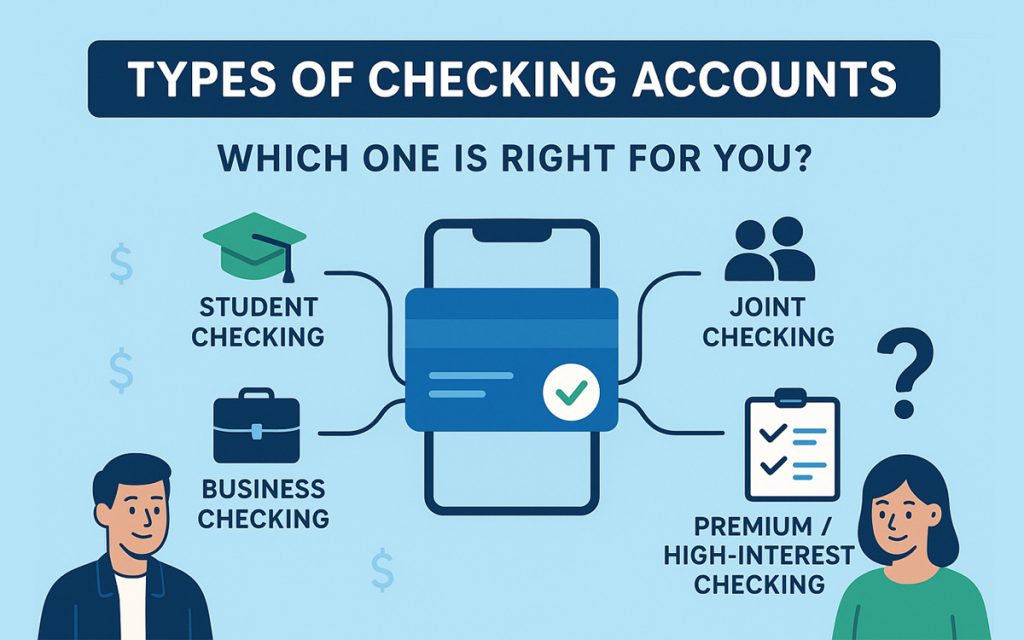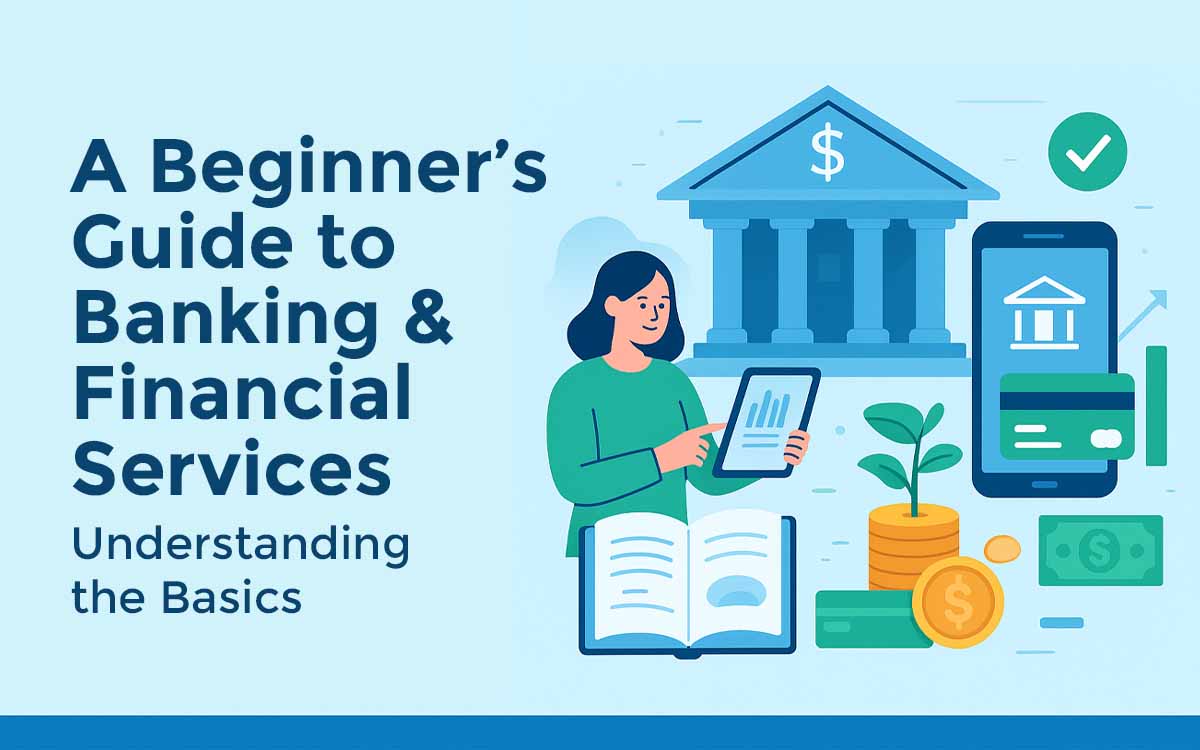Not all checking accounts are created equal. Depending on your needs, whether you’re a student, freelancer, family, or business owner, there’s a type of checking account designed for you.
Choosing the right account can save you money on fees, provide better access to your cash, and even help you earn rewards. In this guide, we’ll explore the most common types of checking accounts, who they’re best for, and how to choose the one that fits your financial goals.

1. Standard Checking Account
A standard checking account is the most common type and works as your everyday spending hub.
Features:
- Debit card for purchases and ATM withdrawals
- Unlimited deposits and withdrawals
- May have monthly maintenance fees
- Low to no interest earnings
Best for: Anyone looking for a basic account for daily expenses.
2. Free Checking Account
As the name suggests, this account comes with no monthly maintenance fees, though you may need to meet requirements (like direct deposit or minimum balance).
Features:
- No monthly service charges
- Often offered by online banks and credit unions
- Still may charge ATM or overdraft fees
Best for: Budget-conscious users who want to avoid unnecessary costs.
3. Online Checking Account
Managed entirely through mobile apps or websites, online checking accounts are becoming more popular.
Features:
- 24/7 access through mobile or desktop banking
- Usually no physical branches
- Higher likelihood of no fees and better interest rates
- Wider ATM networks via partnerships
Best for: Tech-savvy individuals who prefer mobile-first banking.
4. Student Checking Account
Designed specifically for students, these accounts typically reduce or eliminate fees.
Features:
- No or low monthly fees
- Age or student-status restrictions (often under 24 and enrolled in school)
- Limited overdraft protection
- Sometimes includes financial education resources
Best for: High school or college students managing money for the first time.
5. Joint Checking Account
This account is shared by two or more people (commonly spouses or family members).
Features:
- Equal access for both account holders
- Shared responsibility for deposits, withdrawals, and fees
- Transparent financial management
Best for: Couples or family members who share expenses.
6. Business Checking Account
A business checking account is designed to separate personal and business finances.
Features:
- Tailored for entrepreneurs, freelancers, and small businesses
- Higher transaction limits
- May offer business-related perks (like merchant services)
- Fees vary depending on activity levels
Best for: Business owners and freelancers who want clean financial separation.
7. Premium Checking Account
Premium accounts offer extra perks but usually require higher balances.
Features:
- Higher interest rates on deposits
- Free checks, ATM reimbursements, and extra rewards
- Often tied to maintaining large balances ($10,000–$25,000+)
- Monthly fees if requirements aren’t met
Best for: High-income earners or those with large deposits who want rewards.
8. Second-Chance Checking Account
For those with poor credit or a history of overdrafts, this option helps rebuild trust with banks.
Features:
- Fewer features than standard accounts
- Higher fees may apply
- Can transition into a standard account after good use
Best for: Individuals rebuilding credit or financial history.
How to Choose the Right Checking Account
When deciding, consider:
- Fees: Look for no-fee or low-fee accounts.
- Accessibility: Do you need a physical branch or is online fine?
- Interest: Do you want your balance to earn returns?
- Lifestyle: Are you a student, traveler, or freelancer?
- Extra perks: ATM fee refunds, overdraft protection, rewards.
Conclusion
There’s no one-size-fits-all checking account. The right choice depends on your lifestyle, financial habits, and goals. By understanding the different types of checking accounts available, you can pick the one that saves you money and makes managing your finances easier.
Next Steps: Once you’ve chosen the right type, learn how to avoid checking account fees and compare the best checking accounts in 2025.



